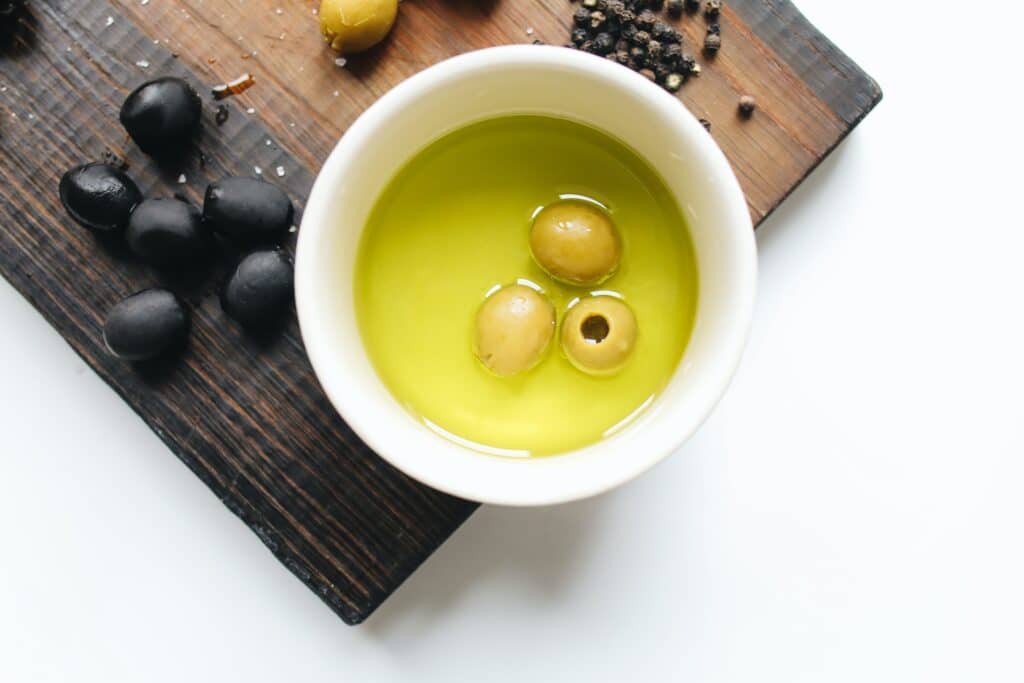Introduction
High blood uric acid levels, known as hyperuricemia, affect over 20% of the global population, making it a significant health concern. Surprisingly, hyperuricemia is often asymptomatic, meaning individuals may be unaware of the potential risks it poses to their health. This article aims to shed light on the consequences of elevated uric acid levels and explore strategies to reduce them.

The Benefits and Risks of Uric Acid
Uric acid, despite its notorious reputation, plays a complex role in the human body. When maintained within a normal range, uric acid offers several benefits, acting as a multifaceted molecule with diverse functions.
However, when it veers off course and reaches elevated levels, the risks begin to outweigh the advantages, leading to a condition we know all too well – gout.
Within the realm of normalcy, uric acid demonstrates its prowess as a valuable player in our physiological processes.
One of its notable benefits lies in its ability to stimulate the immune system, acting as a defender against microbial invaders.
Uric acid can trigger an immune response, bolstering our body’s natural defense mechanisms against potential threats.
Furthermore, uric acid showcases its neuroprotective capabilities, acting as a shield for our delicate nerve cells. Studies have suggested that uric acid may have a role in safeguarding neurons from damage, potentially offering a level of protection against neurological disorders.
Another remarkable attribute of uric acid is its antioxidant properties.
Acting as a potent scavenger of free radicals, uric acid helps neutralize these harmful molecules that can cause oxidative stress and damage to our cells. By doing so, it contributes to the overall balance within our body’s intricate antioxidant defense system.
However, like a double-edged sword, the benefits of uric acid can swiftly transform into risks when levels become elevated.
Gout, a condition synonymous with excess uric acid, takes the center stage. When uric acid concentrations exceed the body’s ability to dissolve and eliminate it, urate crystals start to form, most notably in the joints.
This crystalline formation triggers a cascade of events, setting off an inflammatory response that leads to tissue damage and the characteristic symptoms of gout.
The affected joints become swollen, tender, and excruciatingly painful, often causing significant impairment in mobility and overall quality of life. The risk of recurrent gout attacks looms large, further complicating the picture.
While gout is the primary concern associated with elevated uric acid levels, it is crucial to acknowledge that other health risks may emerge as well. As discussed previously, high uric acid levels pose threats to the cardiovascular system, kidney function, liver health, and blood sugar regulation. These potential consequences underscore the need for vigilance and timely intervention to mitigate the risks posed by hyperuricemia.
Uric acid is a molecule of paradoxical nature. Within normal limits, it contributes to immune stimulation, neuroprotection, and antioxidant defense. However, when it surpasses its threshold, the risks escalate, resulting in the painful and debilitating condition known as gout. Recognizing the fine balance between the benefits and risks of uric acid is key to maintaining overall health and well-being.
Cardiovascular Risks and Uric Acid
When it comes to matters of the heart, high levels of uric acid are no laughing matter. The consequences can be grave, posing a significant threat to the cardiovascular system. Brace yourself for a more serious discussion on the risks associated with elevated uric acid levels and their impact on heart health.
Scientific studies have left no room for doubt – there is a clear and alarming link between high uric acid levels and cardiovascular diseases. Individuals with elevated uric acid levels face an increased risk of developing a range of cardiovascular conditions, including coronary artery disease, heart failure, hypertension, stroke, and atrial fibrillation. It’s like uric acid has a sinister plan to wreak havoc on our hearts, and it’s up to us to fight back.
To make matters worse, hyperuricemia, the medical term for high uric acid levels, is not just a bystander but an active contributor to the exacerbation of cardiovascular diseases. It’s like uric acid decided to team up with the existing heart conditions, making them even more challenging to manage. This partnership can have devastating consequences, leading to further complications and poorer health outcomes.
The stakes are high, as uric acid’s association with cardiovascular diseases goes beyond just increasing the risk of developing them. It also influences mortality rates. A comprehensive analysis of 32 scientific studies revealed a startling truth – individuals with high uric acid levels face a 45% higher risk of premature death due to cardiovascular diseases. This finding sends a clear message that the battle against uric acid is a battle for life itself.
Interestingly, it appears that the impact of high uric acid levels on cardiovascular health is not equal among men and women. Women seem to be particularly vulnerable to the detrimental effects of uric acid on the heart. It’s like uric acid has a special preference for challenging the female heart, making it even more crucial to recognize and address this risk factor in women’s cardiovascular health.
So, what can we do in the face of this serious threat? It all starts with awareness and action. Recognizing the risks associated with elevated uric acid levels is essential, as early intervention can make a significant difference. Consultation with a healthcare professional becomes paramount, as they can provide accurate diagnosis, appropriate treatment, and guidance on managing uric acid levels.
In the battle for heart health, lifestyle modifications play a crucial role. Making dietary changes, such as reducing purine-rich foods and avoiding excessive alcohol consumption, can help lower uric acid levels and mitigate cardiovascular risks. Regular exercise, maintaining a healthy weight, and managing other risk factors like blood pressure and cholesterol levels are also important steps in protecting our hearts from the clutches of uric acid.
Let’s take this threat seriously and be proactive in safeguarding our hearts. By understanding the risks, seeking professional guidance, and making positive lifestyle choices, we can tilt the scales in our favor.
Mechanisms of Uric Acid Damage
First on the list is uric acid’s brilliant idea to slow down blood flow in the heart by promoting the calcification of coronary arteries. It’s like uric acid thought it could turn our arteries into little stone sculptures, adding a touch of artistic flair to our cardiovascular system. Well, let’s just say it didn’t quite earn the applause it was expecting. Instead, it got a resounding “boo!” from our hearts, who prefer flexibility and smooth sailing over being turned into statues.
But wait, there’s more! Uric acid also moonlights as a professional matchmaker for cholesterol and mischief. It contributes to cholesterol oxidation, making it easier for those pesky atherosclerotic plaques to form. It’s like uric acid thinks it’s Cupid, playing matchmaker for cholesterol and blood vessel walls. Unfortunately, this love affair leads to clogged arteries and all the drama that comes with it.
And that’s not all, folks. Uric acid has another trick up its sleeve. It has a talent for disrupting the production of nitric oxide, a compound responsible for maintaining healthy blood vessel function. It’s like uric acid wants to turn our blood vessels into cranky old folks, grumbling and refusing to function properly. “No nitric oxide for you!” it says, leaving our blood vessels in a state of dismay.
But the show doesn’t stop there. Uric acid’s grand finale involves the formation of urate crystals on blood vessel walls. It’s like uric acid thought, “Why not add a bit of sparkle to our blood vessels? Crystals are so in right now!” Unfortunately, this glitzy display impairs the proper function of our blood vessels, causing even more chaos in the cardiovascular system.
And if you thought uric acid was done, think again! It loves to throw in a bonus feature: an increased risk of hypertriglyceridemia. You know, the condition characterized by elevated triglyceride levels in the blood. Uric acid seems to enjoy piling on the challenges, like a cruel game show host saying, “You thought you had enough to deal with? Well, here’s one more!”
But fear not, brave souls! We have the power to combat this mischievous uric acid. By keeping our levels in check through lifestyle changes, dietary adjustments, and perhaps a sprinkle of humor, we can stand up to its antics. Remember, laughter is the best medicine, and in the face of uric acid’s mischief, a little laughter can go a long way.

Uric Acid and Liver Health
Believe it or not, uric acid doesn’t just stop at causing chaos in the cardiovascular system. It’s an equal-opportunity mischief-maker, and the liver is not spared from its mischievous antics. Prepare yourself for a tale of high uric acid levels and their unexpected impact on liver health.
Picture this: a liver sitting peacefully, minding its own business, when suddenly, uric acid barges in like an uninvited guest at a party. Studies have shown that individuals with elevated uric acid levels face a 50-80% higher risk of fatty liver disease, also known as steatosis. It’s like uric acid decided to turn the liver into its personal storage unit for excess fat, much to the liver’s dismay.
Now, you might be wondering how uric acid manages to wreak havoc on the liver. Well, it turns out that this mischievous acid has a knack for causing chronic inflammation. By increasing uric acid levels, it sets the stage for a chronic inflammatory state within the liver. It’s like uric acid thought, “Why not add some heat to the party?” Unfortunately, this inflammatory state takes a toll on the liver, leading to the development of fatty liver disease.
But wait, there’s a twist in the tale! Uric acid seems to have a preference for mischief among women. Yes, you read that right. Women are at a higher risk than men for uric acid-induced fatty liver disease. It’s like uric acid decided to switch things up and challenge societal norms. Who said mischievous antics had to be gender-neutral? Uric acid has a flair for surprising us all.
So, what can we do to protect our livers from uric acid’s escapades? Well, knowledge is power. By recognizing the risks associated with elevated uric acid levels, we can take proactive measures. Consulting a healthcare professional becomes crucial in accurately diagnosing and managing uric acid levels. They can guide us in making lifestyle modifications, including dietary changes and regular exercise, to help reduce uric acid levels and mitigate the associated risks to liver health.
In the battle against uric acid’s mischief, let’s not forget to inject a bit of humor into the mix. After all, laughter is known to be good for the liver, and a little lightheartedness can go a long way in navigating the twists and turns of health challenges.
So, raise your glass (of water, of course) and toast to a healthy liver, free from the pranks of uric acid. Let’s show this mischievous acid that our livers are not to be messed with.

Uric Acid and Blood Sugar Regulation
Picture this – your body is like a bustling city, with different departments responsible for maintaining order and balance. In this quirky scenario, the “Uric Acid Control Center” decides to pull a hilarious prank on the “Blood Sugar Regulation Department,” causing some carbohydrate chaos!
Elevated uric acid levels, like mischievous troublemakers, sneak into the scene and disrupt the smooth operation of carbohydrate metabolism. It’s like they’ve taken a detour sign and redirected the flow of glucose traffic in all the wrong ways. The result? Increased risks of insulin resistance and the dreaded type 2 diabetes.
In the scientific world, researchers have actually discovered that individuals with the highest uric acid levels have nearly double the chance of winning the diabetes lottery compared to those with lower levels. Who would have thought that uric acid could be such a mischievous character in the intricate dance of blood sugar regulation?
But here’s the comedic twist: uric acid decides to play the role of the clumsy intern who accidentally spills coffee on important documents. In this case, it interferes with cellular insulin sensitivity, causing a grand case of mistaken identity. Insulin, the hardworking hormone responsible for regulating blood sugar, gets all confused and starts knocking on the wrong doors, trying to deliver its important messages. And just like that, insulin resistance kicks in, leading to a series of hilarious yet unfortunate events, culminating in the development of diabetes.
But fear not, because our story doesn’t end there. There’s hope for our carbohydrate calamity! By keeping uric acid levels in check, we can put an end to this comedic catastrophe. Imagine uric acid as a well-behaved intern, diligently following the instructions and letting insulin do its job without any hilarious mix-ups.
So, folks, let’s all join the comedic crusade against high uric acid levels. Through lifestyle modifications, dietary changes, and regular exercise, we can restore order to the carbohydrate chaos, ensuring that blood sugar regulation operates smoothly once again. And in this comedy of errors, a healthy and balanced body takes center stage, leaving uric acid as nothing more than a minor character in the grand theater of life.
Uric Acid and Kidney Function
The kidneys play a crucial role in maintaining the balance of uric acid in the body. They are responsible for filtering uric acid from the bloodstream and excreting it through urine. However, when uric acid levels become chronically elevated, the kidneys can be negatively affected, leading to various kidney-related complications.
One of the primary concerns associated with high uric acid levels is the increased risk of chronic kidney disease (CKD). CKD is a progressive condition characterized by the gradual loss of kidney function over time. Several studies have demonstrated a strong association between hyperuricemia and the development and progression of CKD. Long-term exposure to elevated uric acid levels can damage the delicate structures of the kidneys, leading to inflammation, oxidative stress, and impaired renal function.
A comprehensive scientific review published in 2021 analyzed the available evidence and reported that individuals with high uric acid levels had a nearly three times higher risk of kidney failure compared to those with normal levels. This highlights the significant impact of hyperuricemia on kidney health and the importance of monitoring uric acid levels to prevent the progression of kidney disease.
Furthermore, individuals with diabetes are particularly vulnerable to the adverse effects of elevated uric acid levels on kidney function. Diabetic nephropathy, also known as diabetic kidney disease, is a common complication of diabetes that affects the kidneys. Research suggests that the presence of high uric acid levels further exacerbates the development and progression of diabetic nephropathy. Uric acid can contribute to kidney damage by inducing inflammation, oxidative stress, and endothelial dysfunction in the kidneys, ultimately leading to renal impairment.
Managing uric acid levels in individuals with diabetes is crucial for preventing or delaying the onset of diabetic kidney disease. By effectively controlling uric acid levels through medication, dietary modifications, and lifestyle changes, it may be possible to reduce the risk and slow the progression of kidney complications in individuals with diabetes.
In conclusion, high uric acid levels pose a significant threat to kidney function. Prolonged exposure to elevated uric acid increases the risk of chronic kidney disease, and individuals with diabetes are particularly susceptible to diabetic nephropathy in the presence of high uric acid levels. Monitoring uric acid levels and implementing appropriate interventions are vital for preserving kidney health. Healthcare professionals should consider the impact of uric acid on kidney function when evaluating and managing patients with kidney disease or diabetes. By addressing and managing uric acid levels, individuals can help safeguard their kidney function and overall well-being.
Conclusion
The detrimental effects of high blood uric acid levels extend far beyond the commonly recognized association with gout. It is crucial to understand that hyperuricemia poses risks to various aspects of overall health, including the cardiovascular system, liver health, blood sugar regulation, and kidney function.
Cardiovascular risks associated with elevated uric acid levels are significant. Research has consistently shown an increased risk of coronary artery disease, heart failure, hypertension, stroke, and atrial fibrillation in individuals with hyperuricemia. Moreover, high uric acid levels have been linked to exacerbation of cardiovascular diseases and higher mortality rates. These findings emphasize the importance of monitoring and managing uric acid levels to reduce the risk of cardiovascular complications.
The impact of high uric acid levels on liver health is another area of concern. Studies have indicated a higher risk of fatty liver disease (steatosis) in individuals with elevated uric acid levels. The chronic inflammatory state induced by increased uric acid levels contributes to the development of fatty liver disease, particularly in women. This highlights the need to address uric acid levels as part of liver health management.
Disturbances in blood sugar regulation are also associated with hyperuricemia. High uric acid levels can disrupt carbohydrate metabolism and increase the risk of insulin resistance and type 2 diabetes. It is important to recognize the connection between uric acid levels and the development of diabetes to implement early interventions and preventive measures.
The kidneys are particularly vulnerable to the damaging effects of high uric acid levels. Prolonged exposure to elevated uric acid increases the risk of chronic kidney disease and kidney failure. This risk is further amplified in individuals with diabetes, as uric acid levels can contribute to the development of diabetic kidney disease. Regular monitoring of uric acid levels and appropriate management strategies are essential for kidney health.
In conclusion, it is evident that high blood uric acid levels have far-reaching consequences for overall health. Beyond its well-known association with gout, hyperuricemia poses risks to the cardiovascular system, liver health, blood sugar regulation, and kidney function. Recognizing the potential dangers of elevated uric acid and seeking early intervention are crucial for preventing related complications. If you suspect elevated uric acid levels, it is advisable to consult a healthcare professional who can provide an accurate diagnosis, appropriate treatment, and guidance on lifestyle modifications. These may include dietary changes, regular exercise, and other interventions to help reduce uric acid levels and mitigate the associated health risks. By taking proactive steps, individuals can protect their health and well-being in the face of high blood uric acid levels.










